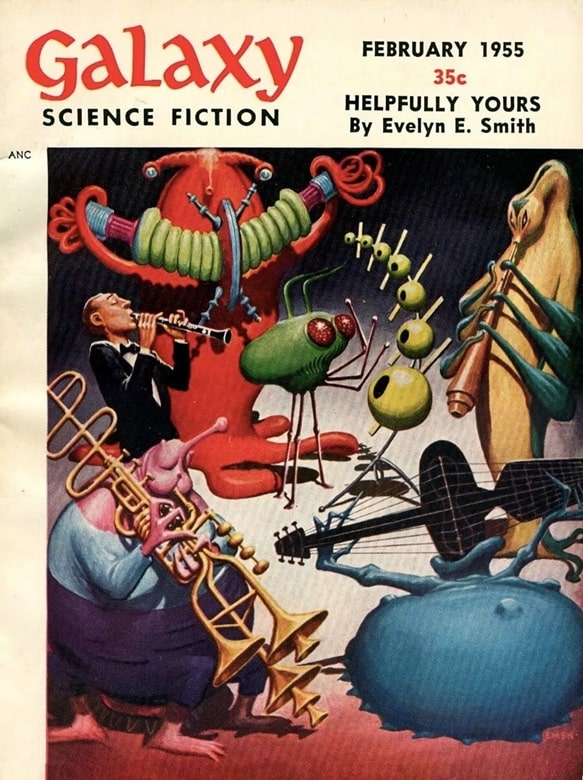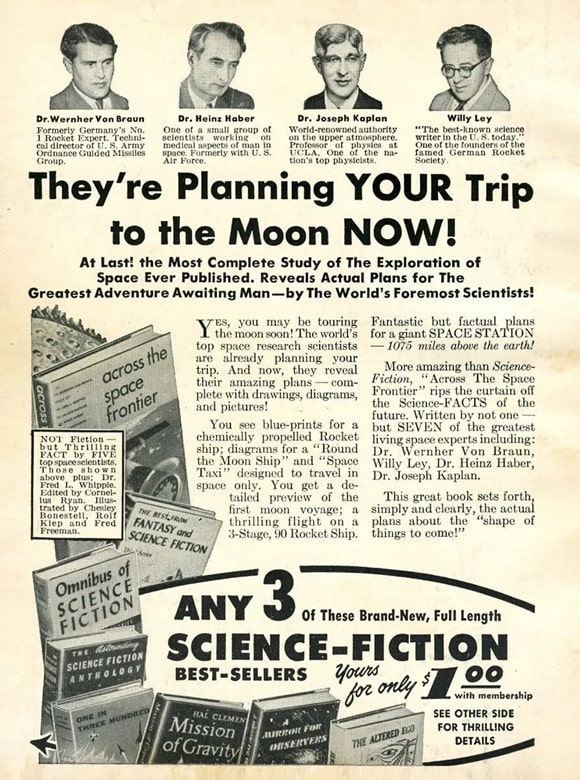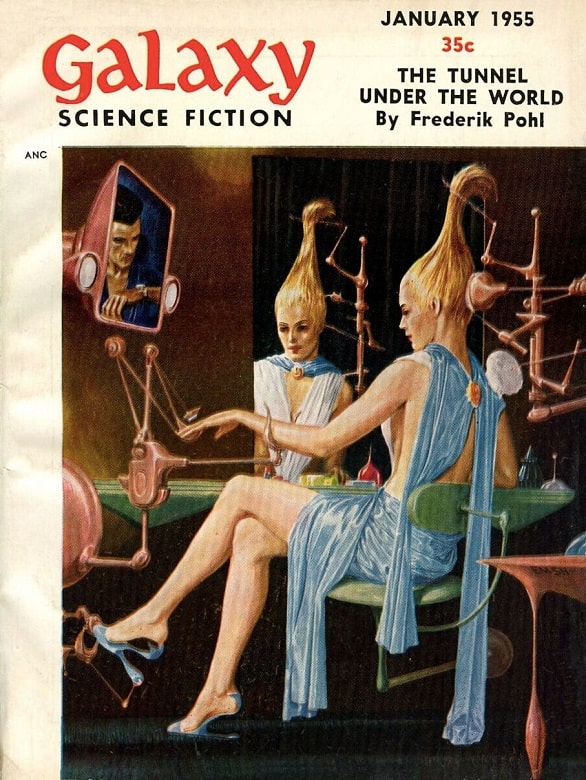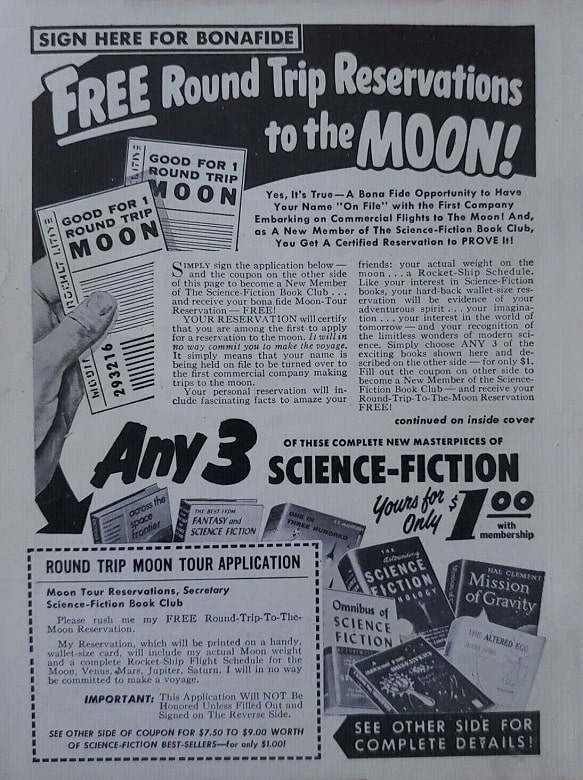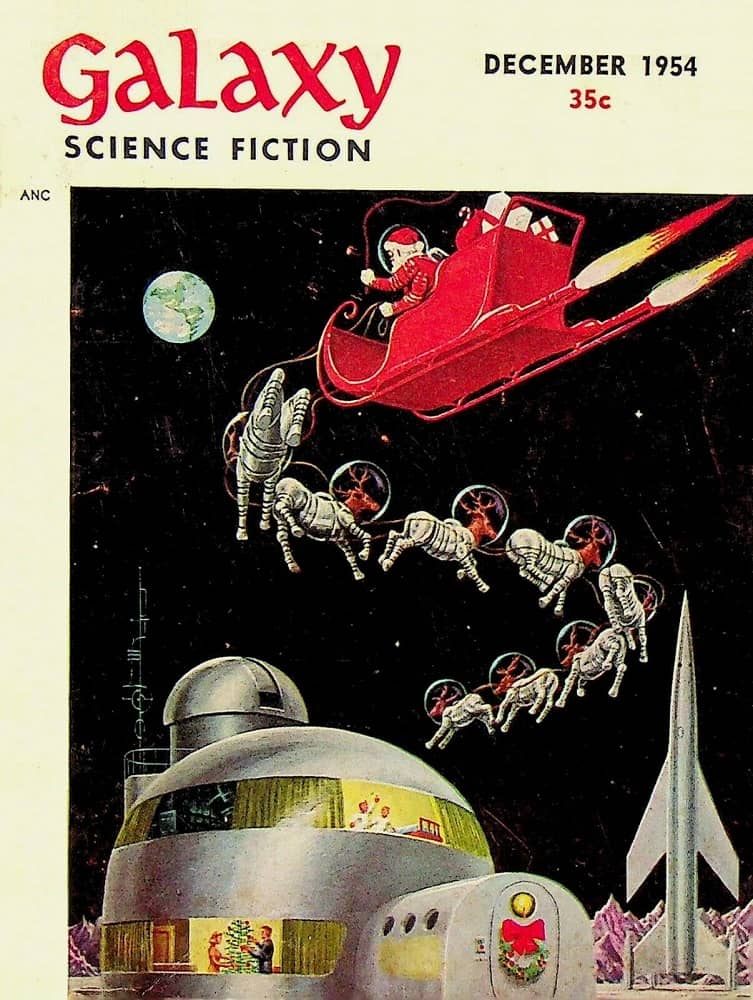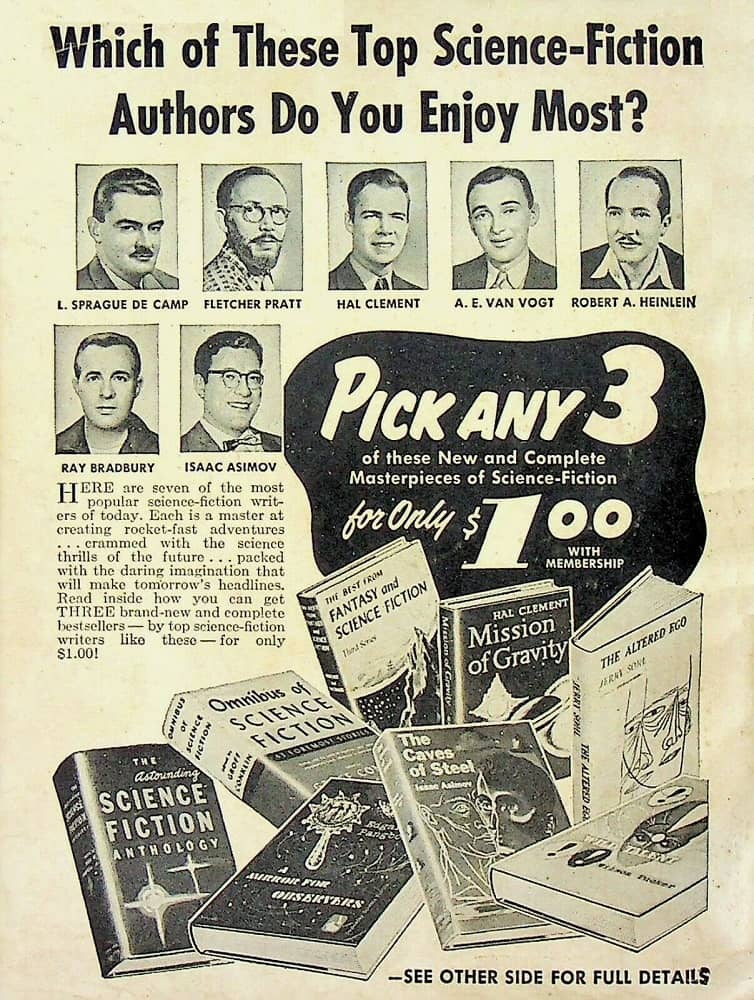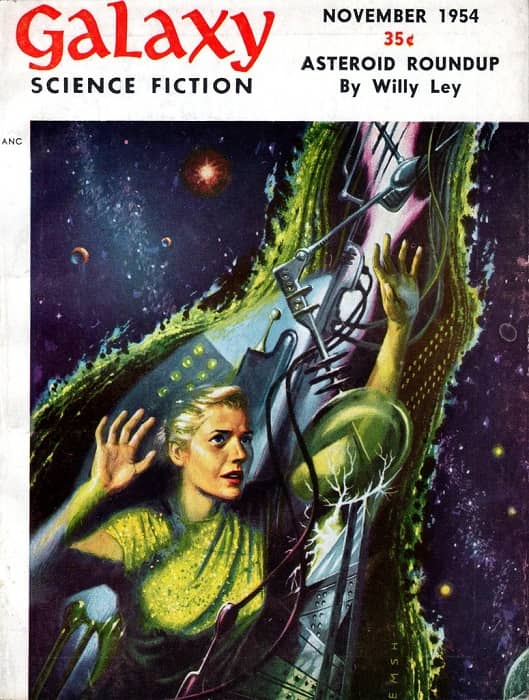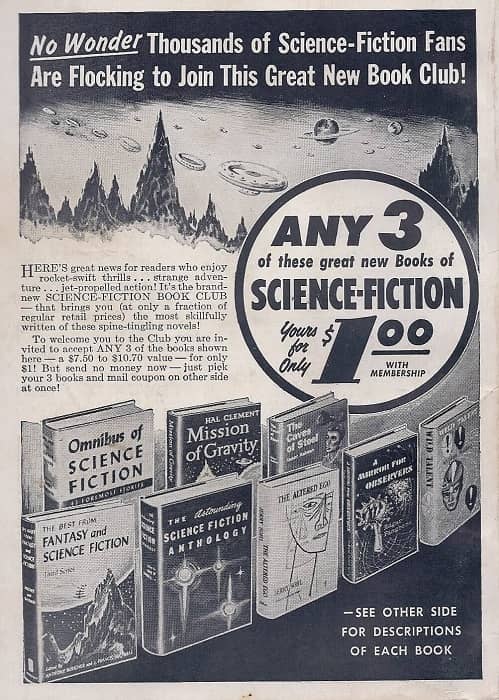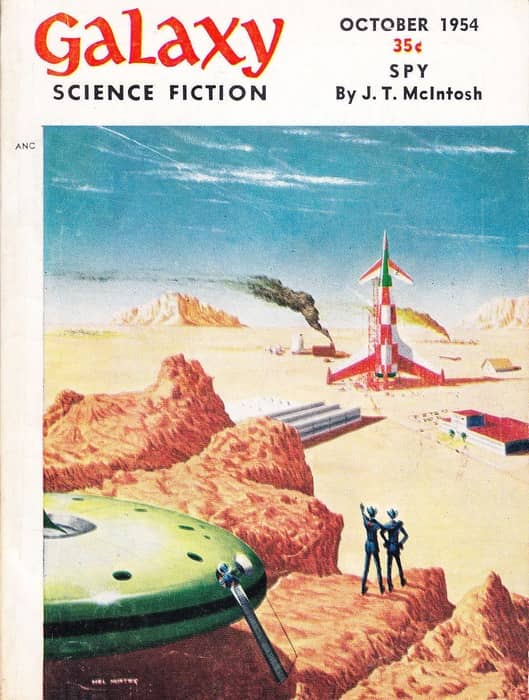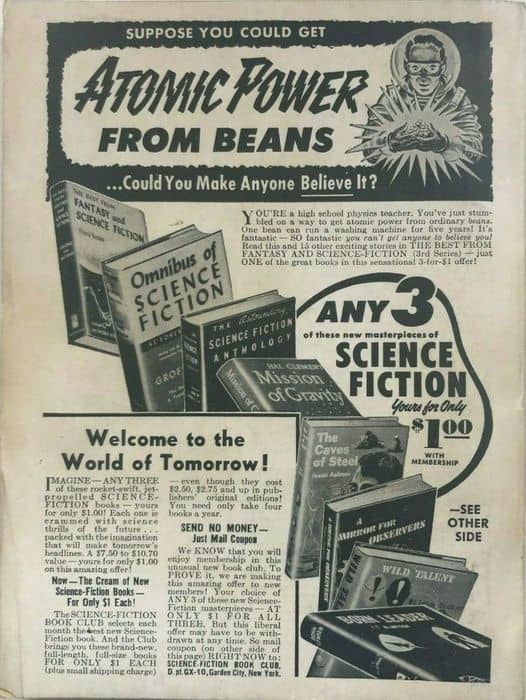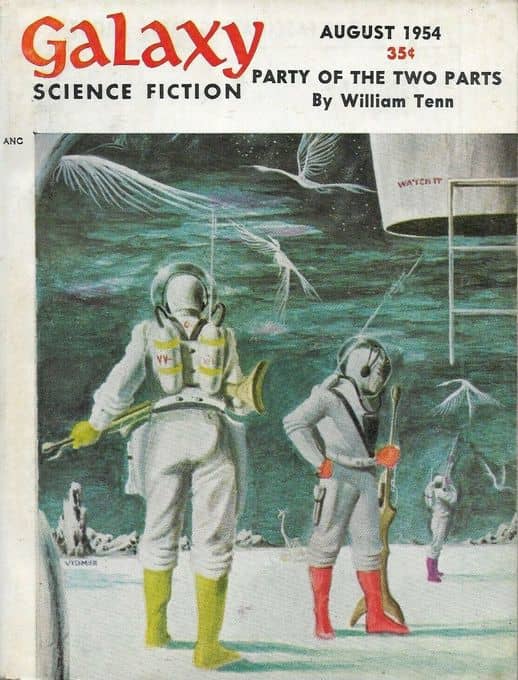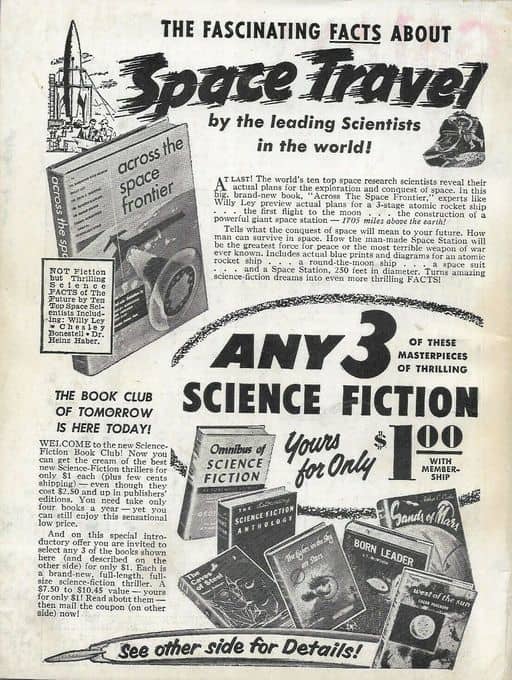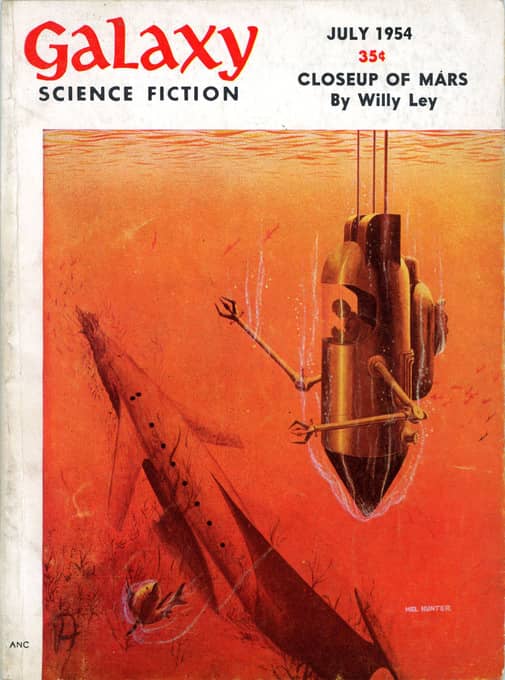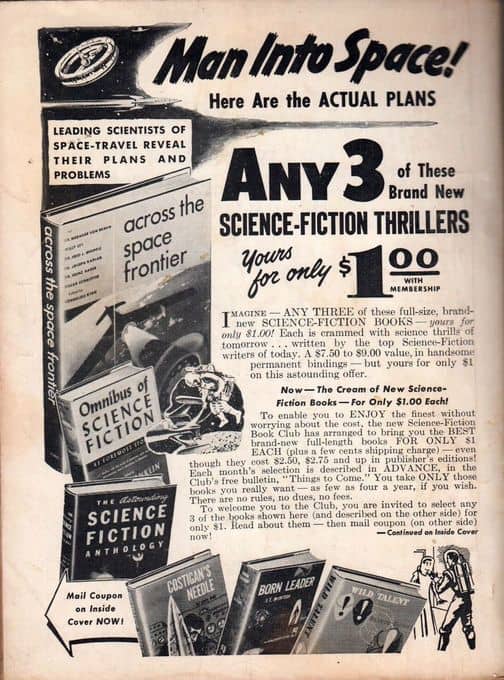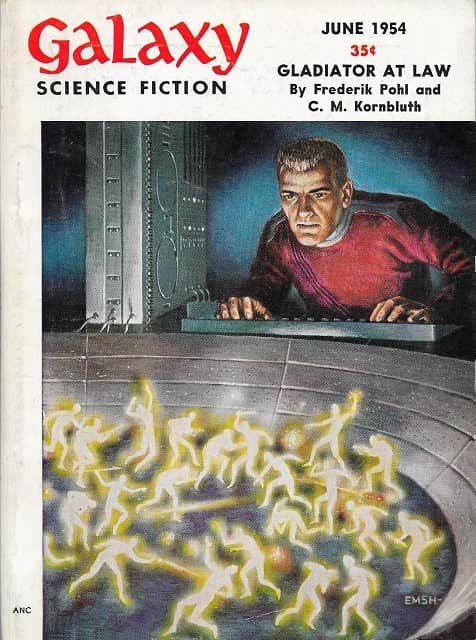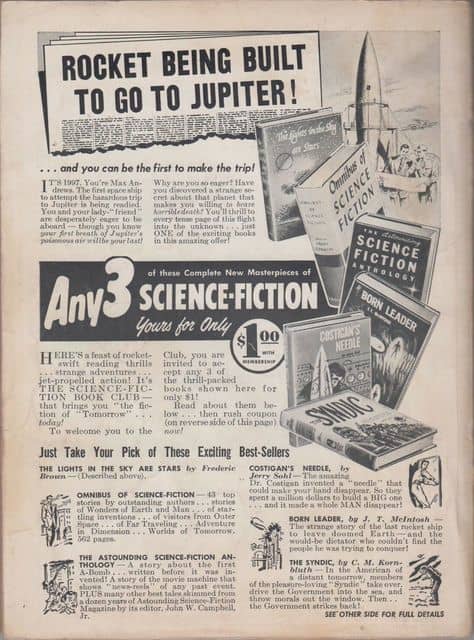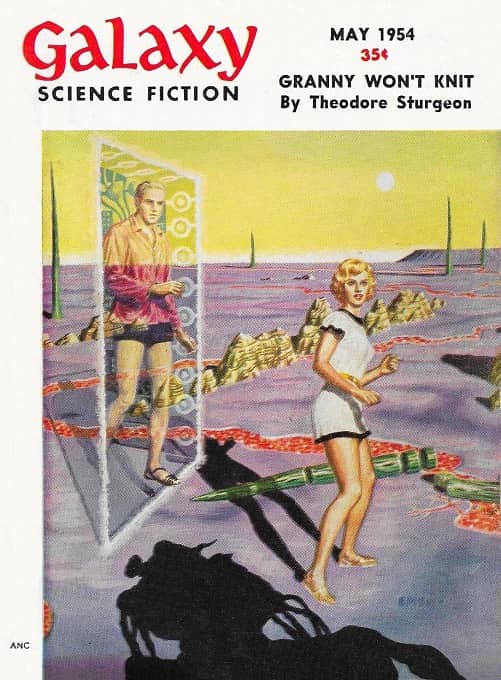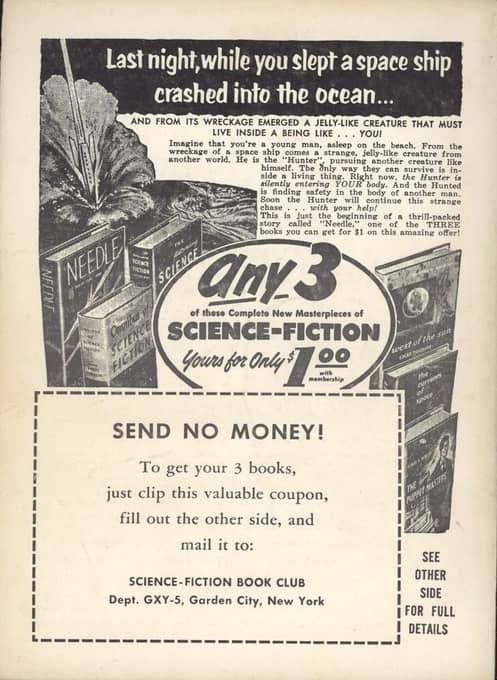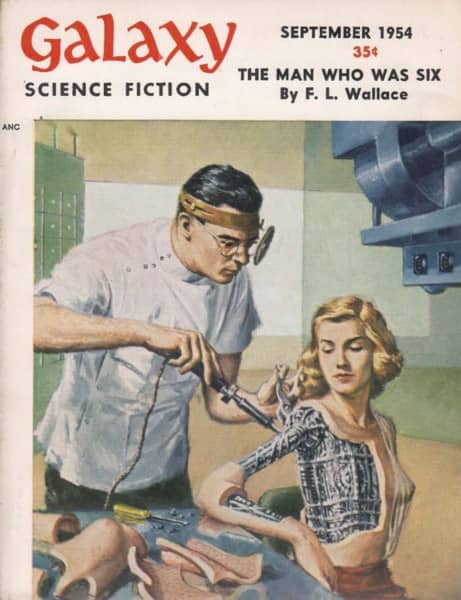
Art by Ed Emshwiller
I find the cover of the September, 1954 issue of Galaxy Science Fiction a bit risque for Ed Emshwiller (a piece titled “Robots Repaired While U Wait”). Editor H. L. Gold produced a magazine that you wouldn’t have to hide from people, unlike other fiction offerings that had much more salacious artwork (please don’t attach any to this article, John). But you may have to keep this issue face-down around coworkers and family.
“The Man Who Was Six” by F. L. Wallace — Dan Merrol doesn’t know who he is anymore. Ostensibly, he’s Dan Merrol, but his body is unrecognizable, even to himself. After a horrific accident, doctors used an amalgamation of human donors to heal Dan’s broken body. With legs of different lengths, arms of varying bulk, and multi-colored hair, Dan’s become a laughable caricature of humanity. But it’s not just his body; his damaged brain was also rebuilt using slivers of other brains, giving him memories of lives he never lived. He wants to return to a normal life as a pilot and try to resume his marriage, if his wife could possibly still love the creature he’s become.
I like how Wallace examines Dan’s predicament. The initial confusion, the stages of grief in dealing with who and what he’s become. It maintains a somber tone but allows for lighter moments.
“A Start in Life” by Arthur Sellings — Em and Jay are robots raising two unrelated six-year-old children (a boy and a girl). Their world is confined, and there are no other humans to interact with. The children begin asking more questions about their world, and Em is hesitant to share anything new. The truth will come out eventually, but is this the right time, she wonders?
…
Read More Read More
